
RON EGLASH
Integration of Computational Thinking and Science Using Culturally-Based Topics
NSF Awards: 1930072
What role can STEM play in creating a future where racism has been defeated; health for all restored; and the environment no longer endangered? Our online curriculum at Culturally Situated Design Tools can help you direct youth along that path. Using simulations of cultural practices students can learn a decolonial view, taking on iteration in Native weaving; nonlinear curves Cornrow hairstyles; modular arithmetic in HipHop and more. Diving deeper, a systems science perspective on Indigenous knowledge shows that these traditional circular economies provide a model for how the next generation can refashion technology as a prosthetic for healing our wounded world.
Integration of Computational Thinking and Science Using Culturally-Based Topics
NSF Awards: 1930072
What role can STEM play in creating a future where racism has been defeated; health for all restored; and the environment no longer endangered? Our online curriculum at Culturally Situated Design Tools can help you direct youth along that path. Using simulations of cultural practices students can learn a decolonial view, taking on iteration in Native weaving; nonlinear curves Cornrow hairstyles; modular arithmetic in HipHop and more. Diving deeper, a systems science perspective on Indigenous knowledge shows that these traditional circular economies provide a model for how the next generation can refashion technology as a prosthetic for healing our wounded world.
-
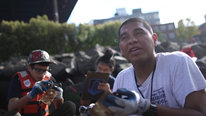 Billion Oyster Project Curriculum and Community Enterprise
Billion Oyster Project Curriculum and Community Enterprise
Dr. Lauren Birney
-
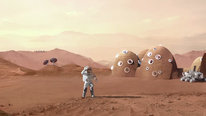 Creative Problem Solving in STEM in Minecraft
Creative Problem Solving in STEM in Minecraft
Brian Guerrero
-
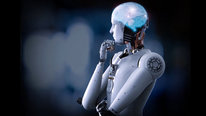 PrimaryAI: Integrating AI into Elementary Science using PBL
PrimaryAI: Integrating AI into Elementary Science using PBL
J. Adam Scribner
-
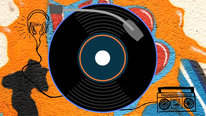 Designing hip-hop ecologies for computational learning
Designing hip-hop ecologies for computational learning
Christopher Wright
-
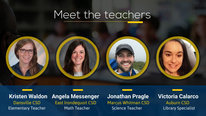 STEM Master Teachers Emerging as Leaders during the Pandemic
STEM Master Teachers Emerging as Leaders during the Pandemic
Zenon Borys
-
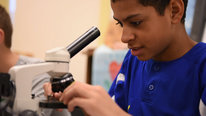 Integrating Computer Science with Middle School Science
Integrating Computer Science with Middle School Science
Marina Van der Eb
2108 Views
Continue the discussion of this presentation on the Multiplex. Go to Multiplex
2108 Views
presentation
has been viewed
Related videos you might be interested in...
-
 Billion Oyster Project Curriculum and Community Enterprise
Billion Oyster Project Curriculum and Community Enterprise
Dr. Lauren Birney
-
 Creative Problem Solving in STEM in Minecraft
Creative Problem Solving in STEM in Minecraft
Brian Guerrero
-
 PrimaryAI: Integrating AI into Elementary Science using PBL
PrimaryAI: Integrating AI into Elementary Science using PBL
J. Adam Scribner
-
 Designing hip-hop ecologies for computational learning
Designing hip-hop ecologies for computational learning
Christopher Wright
-
 STEM Master Teachers Emerging as Leaders during the Pandemic
STEM Master Teachers Emerging as Leaders during the Pandemic
Zenon Borys
-
 Integrating Computer Science with Middle School Science
Integrating Computer Science with Middle School Science
Marina Van der Eb
Ron Eglash
Professor
Greetings all! If you have a question or comment, please post!
For those interested in trying out the software, all our culture-based learning tools are free to access at https://csdt.org/
If you are looking for publications: https://csdt.org/publications/
And for more about the community development side of things: https://generativejustice.org/projects/
Corinne Brenner
Very interesting! Have there been examples/times when artisans or those with cultural ownership have engaged with or iterated on the technology in their own practice?
Ron Eglash
Professor
Yes, and we try to actively facilitate that. We sent a laser cutter to our collaborators in Ghana, and they have started a business based on using the simulations in textile fabrication: https://africanfuturist.org/afrofuture-fashions/.
In Ethiopia they used the African fractal simulation for a new architectural design: https://blog.ted.com/architecture-infused-with-fractals-ron-eglash-and-xavier-vilalta/
More examples here: https://generativejustice.org/projects/
Stephen Uzzo
Chief Scientist
Ron –
I’m really interested in this work, the impact on communities and the potential to value cultural funds of knowledge. Have you done ethnographic work in the kinds of impact this work has on communities and their perception of the value of traditional knowledge situated in their individual and communal needs (like income, leaving their communities for economic opportunity elsewhere, healthcare, etc.)? I know this is a big question, but it is interesting to think about what conclusions can be drawn from situating traditional knowledge in the milieu of Western technologies and to what degree it expands and broadens validation of their world view within the Western context those technologies imply.
Ron Eglash
Professor
Great question Stephen. We have been getting good results along those lines: elders saying that this is helping to revitalize interest in cultural tradition for the youth; young people using this for economic opportunity. Here are some examples:
African-American cosmetology as a link between computing education and community wealth
https://africanfuturist.org/store/afrofuture-fashions/
Automation for the Artisanal Economy: Enhancing the Economic and Environmental Sustainability of Crafting Professions with Human-Machine Collaboration.
Billy Spitzer
PI
Ron,
I really appreciated your emphasis on starting your work with "asking for permission" and seeking to understand indigenous knowledge from the point of view of those you are working with, before undertaking the integration between computing and culture that you are pursuing. The example you showed in the video was so compelling, and your use of a "show instead of tell" approach using music and little narration really helped focus on the activity itself. I would be interested in learning more about any of your findings you can share at this point, your work is really breaking some new ground.
Ron Eglash
Professor
Thanks Billy -- you can view our publications here: https://csdt.org/publications. Some assessments are using controlled studies: one group of kids get a culture-based lesson, the other non-culture based. You can see that approach here for example. But I prefer an "all in" approach where we invite the actual artisans into the classroom--hairstylists, weavers, whomever--and do follow-up with the adults to give them access to the tech (for example here). The kids can really be inspired when they see some practical application. And when the adults start using the tech for economic development things can really take off, as we describe here.
Billy Spitzer
PI
Ron, thanks so much for sharing the publications and more details on your approach, this is really helpful!
Nickolay Hristov
Senior Scientist, Director, Associate Professor
Ron, the examples with references above are very helpful to get a sense for the style and scope of your work. I feel fortunate to have come across it and to be part of the conversation here. Likewise, I am eager to dive into the trove of publications that share empirically derived examples and lessons learned in this increasingly relevant space. I second Billy’s point about the minimalist style and effectiveness of the second portion of your video presentation but I miss the same eloquence in the opening sections of the video and have ideas to share for any post-COVID revisions. I also miss the credit slide for this presentation and find notable that you are presenting the work alone and are the only listed author on the NSF proposal. Did you do it “all” by yourself?
Ron Eglash
Professor
I actually submitted the video proposal with three co-authors--they are named, and shown in slide 2. It turned out there was another layer of author "confirmation" that failed to register them. But yes, I am just a little cog in a big mechanism! For example our publication here includes African, African American, and Native American co-authors. Also, for each CSDT, we have materials that get a bit deeper into the backstory. For example, the Anishinaabe Arcs project began at the request of the Potawatomi Nation school, who had been using the beadloom CSDT. At that link you can see the teaching materials include Runninghorse Livingstone's "wigwametry" curriculum, an interview with Anishinaabe architect Ryan Gorrie, the work recording their Anishinaabe language instructor (audio links in the site), etc.
Regarding the intro, I had to cut all the good stuff to get it to fit! You can see a fuller video presentation here: https://youtu.be/i_dFvv8KMag and there is also my TED talk.
Nickolay Hristov
Senior Scientist, Director, Associate Professor
Thanks for the note, Ron! The discussion forum of the Showcase platform is a great way to clarity and resolve some of the very same issues that you have brought up. I am very sorry to hear that technical glitches have taken away from the richness of the interactions. Co-authors and co-presenters could add tremendously to the depth and colour of the conversations. If you haven’t tried it already, know for future submissions that the project team for the Showcase is terrific at working through technical issues and helping presenters.
Aside from these points, two question have stayed with me since I first saw your presentation but I delayed bringing them up until I got further into your work. Both questions come from deeply insightful work with a local anthropologist in the rural communities in Michoacán, Mexico while developing population monitoring techniques for the monarch butterfly wit’s the sort of ethnographic awareness that Steve brings up above:
(1) Using a metaphor as an examples - how do you ensure that you don’t bring a shiny Ferrari in a community with no roads to drive it on? I say that with the realization that your projects look specifically for a technological entryway into these communities. In our case we had utterly failed the larger vision by trying to force a LiDAR scanning solution to monarch butterfly monitoring in mountain communities in Mexico. In your case, how are the laser cutter and fractal simulator chosen so that they are not shiny but useless in the long term?
(2) One of the consistent messages that emerged from the interactions with Michoacán communities is that Western science often comes and “takes” but rarely, if ever, returns to “give back”. More importantly, what is there to be “given back” so that it is sensible, meaningful and purposeful.
I am eager to hear your thoughts and guidance here as I continue to mine your publications for additional insight.
Ron Eglash
Professor
Technological challenges: In our adinkra simulations in Ghana, we found that the local school had 4 computers for 800 students. So we created "CSDTs unplugged": https://csdt.org/culture/adinkra/teaching-unplu...
We turned the virtual blocks in our scratch-like interface into physical blocks. The adinkra carver created sets of mini-stamps, and the ink-maker supplied some (organic) textile ink. Now the kids can create an algorithm, stamp it on paper, and the teacher can check it on the one computer in the classroom.
But as you say the point should be *returns* of value, not just supplying more coders to industry. So we are working with the ink makers to switch them from wood fires to solar: https://generativejustice.org/solar-dye-in-ghana/. Because of the gendered division of labor, that reduces exposure of women to harmful wood smoke; its eliminates expensive fire wood, and decreases demand for cutting down trees. The ink source is a bark that is sustainably harvested, and bark harvesters protect their forests, so the more traditional ink makers, the more protected forests.
Another problem faced by fabricators is mass-produced fake "african" textiles from China. So we are developing AI that can distinguish between fake and hand-made. The ultimate goal is to link consumers to weavers, so that we change not only production but also the act of consumption to be less alienated (in all senses of that word). Other projects include a locally produced DIY condom vending machine, solar production of charcoal, IoT to monitor processes, etc. All community development is in collaboration with the Ghanaian engineering students (https://generativejustice.org/projects/) and linked back to local STEM ed outreach in K-12.
The biggest challenge is the online marketplace. If you are using amazon or etsy, you do not own the platform. So we have been working towards an "artisanal economy" ecosystem. You can see it in small scale here: https://africanfuturist.org/store/afrofuture-fashions/. The products are shipped to a small Black-owned company in Detroit, who does the e-fulfillment. They have further links with the local development projects such as the AfroFuturist Greenhouse. So the local STEM education kids can also see these direct links to diversifying the *output* of the STEM pipeline, not just its input.
The larger scale, long term vision is mapped out here: https://www.researchgate.net/publication/335058...
Stephen Uzzo
Chief Scientist
Thanks, again Ron -
Realizing the reality of indigenous societies and helping fulfill some of the basic needs along with the intervention and adapting it to the reality of the resources they have available and are what they are accustomed to seems like a real formula for success. It would be interesting to hear more of how your expectations changed as your projects progressed with the various communities you worked with.
Nickolay Hristov
Ron Eglash
Professor
Definitely a lot of changes! When I first started doing this I was focused on the geometric algorithms (weaving, carving, lashing, etc.). They would say "first lets go look at how we select the plant" and I would just go along to be polite. But now I see the computational biocomplexity of these human-ecological collaborations, things that Indigenous folks were pointing out that I was just not attuned to at first. So we have tried to integrate that into the development side. That in turn creates new opportunities for classroom exercises. Same for urban cultures: we started with an investigation of cornrows as heritage algorithms. But when we 3D printed them as mannequin heads for braiding shops, the shop owners wanted to get involved. So we got into teaching adults the use of pH meters for reducing hair damage, and that in turn became a classroom lesson. In sum I guess you could say there has been a sort of co-evolution on both sides.
Nickolay Hristov
Meixi *
Hi Ron, I appreciated you pointing to the biocomplex/ or multi-species systems thinking and how that has been integrated into the development side (would love to learn more about how this is done!) and in turn curriculum development. Process-orientation also feels deeply important in Indigenous contexts too.
I have been doing some work around land-based mathematics in Thailand as well as beginning to get more into this in Minnesota with a Back to Indigenous project with Vince Diaz and others around family storytelling with virtual reality. How have you documented your process? I'd love to learn from you and see how we might document our family-based designs of VR too!
Ron Eglash
Professor
I was in grad school with Vince Diaz, give him a shout out for me!
There are several strategies we use. One is creating links between verbal narratives and the knowledge embedded in movement. For example, we have curated some video clips here. In the second clip I ask students to speculate what is going on with the guy carrying hot coals in a shovel. They get it -- he is starting a fire elsewhere for cooking--but that prompts a discussion about the elegance of movement that prevents people from getting burned. (Ask Vince to show you the movie of his Pohnpeian relatives moving rocks to build a fire--its like a cross between bowling and bricklaying.) Or check out the Yupik physics video.
Some of that is more a deliberate performance. We got the narratives about Anishinaabe quilting from a quilter, and then had one of the students act out the simulation (see bottom of page here).
Another strategy is translating between IKS narratives and ecological knowledge with simulations. You can see that in use with people discussing the medicine wheel, and the a link to the simulation of cycles for ecological burns here. Some are more game-like: https://csdt.org/culture/engineeredecosystems/water.html.
OK am off to check out your "Back to Indigenous Futures" site!
Barbara Rogoff
Hi Ron, I loved watching the arcs take shape! And I'm glad to know that this work is energizing youth in Indigenous communities!
In our video "Learning with Purpose as a Cultural Strength" we are likewise building on Indigenous Knowledge Systems to push beyond deficit models.
Best regards, Barbara
Ron Eglash
Professor
I love your project https://stemforall2021.videohall.com/presentations/1910 -- just left a comment on your page. You might be interested in the tools we developed for teachers in South America: https://csdt.org/culture/whte/index.html. The materials are in English, Spanish and Portuguese. I was a little disappointed that the teachers all focused on the virtual bead loom, because it matched what they already do with Cartesian grids. There is so much more to Indigenous knowledge if we do not treat the standard curriculum as if it is the one true version of STEM. I think the best part was when they brought in artifacts from home. We had friendship bracelets, preserved flowers, notebook doodles--all sorts of things that offered a chance to see how "patterns" can bridge the gap between home and school.
Rebecca Zarger
Barbara, I have been a fan of your work since my grad school days (yes 20+ years), so interesting to see your research presented here. Will be voting for your video as well!
Rebecca Zarger
This is fascinating and a way of sharing and sustaining indigenous knowledge that I was not aware of. I have collaborated with Maya educators and leaders and others in Belize on an informal education initiative that focuses on environmental and cultural heritage by bringing outside of school learning modes to school settings (for more info see www.teacha.org where our curriculum is free to download). I'm an environmental and cultural anthropologist who has worked on the topic of learning environmental knowledge in Belize and Florida. Thanks for sharing your project!
Ron Eglash
Professor
Can't wait to check out your project Rebecca! We did a couple of workshops in South America that drew from Mayan sources; the tools (options for English and Spanish) are here: https://csdt.org/culture/whte/index.html